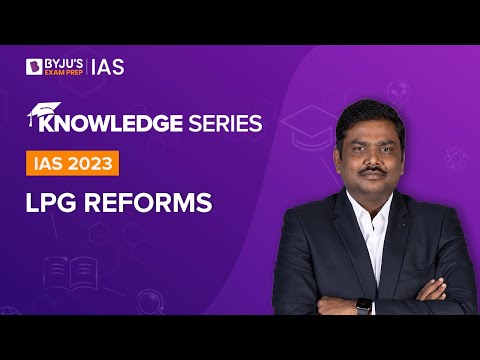India made LPG reforms in 1991. LPG reforms are also known as liberalisation, privatisation and globalisation reforms. They have transformed the way India as an economy works and opened the country up to the world for trade and commerce. On that note, let’s look at some of the details of the LPG reforms for UPSC. This is an important topic in daily current affairs for UPSC.
Candidates can get an answer to When did Liberalisation Privatisation Globalisation start in India? at the linked article.
| Kickstart your UPSC 2023 preparation now and complement it with the links given below: |
|---|
Pre-LPG Era
- After Independence and pre-LPG reforms, India ran on the principle of state interference in labour and financial markets.
- Moreover, industrialisation was under State monitoring. There was also central planning, business regulation and a large public sector.
- Further, the Indian economy was closed, with the Indian rupee being inconvertible.
- There was a strong belief that India needed to rely on internal markets and not external trade for development.
- Finally, PSUs were considered the vehicle of growth, and there were restrictions on MNCs (Multinational Corporations) and FDIs (Foreign Direct Investments).
Factors that Led to the LPG Reforms in India
- The inflation rate rose from 6.7% to 16.7% during this period. India’s position as an economy grew from bad to worse.
- There was a rise in the fiscal deficit of the country as well. Public debt and interest were high, accounting for 36.4% of total government expenditure.
- Furthermore, there was an increase in adverse balance of payments. To clear this, the government had to obtain many foreign loans, which correspondingly led to a rise in the interest payment.
- Poor performance of PSUs became a substantial government liability.
- Outbreak of the Iraq war led to the rise in petrol prices.
- Lastly, India’s foreign reserves fell in 1990-1991.
Also, read:
| Global Innovation Index (GII) | Foreign Contribution Regulation Act (FCRA) |
|---|---|
| FDI Confidence Index | Economy This Week – Weekly Business News Roundup |
Elements of the LPG Reforms in India

LPG model of reforms consists of Liberalisation, Privatisation and Globalisation. Liberalisation resulted in several economic reforms which reduced the tariffs and made policies less constraining.
Privatisation refers to transferring business from a government to a privately owned entity, while globalisation refers to expanding commercial activities globally.
This policy aimed to build foreign reserves and move towards a higher economic growth rate. Also, it proposed to convert the Indian economy into a market economy, free of restrictions. Lastly, the motivation was to increase private players in all sectors of the economy.
Features of LPG Policy
Some of the important policies of LPG reforms are –
- Removal of the industrial raj
- Dilution of the role of the public sector
- Start of privatisation
- Reduction in import tariffs
- Market deregulation
- Reduction of taxes
- Free entry to foreign investment and technology
Some of the positive outcomes of the LPG reforms are as follows –
- India’s GDP growth rate increased.
- There was a strong flow of FDIs.
- Decline in unemployment
- Per capita income increased
- Exports increased.
These were all the essential points on LPG reforms for UPSC from the perspective of competitive exams. Students can refer to other material for their preparation.
Aspirants can visit the linked article and get details about the upcoming government exams that comprise current affairs and general awareness as an important topic in the syllabus.
For the best preparation strategy for competitive exams candidates can visit the linked article and get detailed study material and preparation tips to excel in the examination.
Frequently Asked Questions on LPG Reforms in India
When did the Asian financial crisis take place?
Asian financial crisis took place in 1997-99.
When did the global recession take place after the dot com boom?
Global recession took place in 2001 after the collapse of the dot com boom.
When did the government announce LPG?
The government announced the LPG on 24th July 1991.

Comments